 |
Borj Nord
Fez, Morocco
|
|
 |
Constructed: 1582-1588
Used by: Morocco, France
Conflicts in which it participated:
None
|
In 789AD, Idris I, founder of the Moroccan state (as well as the eponymous Idrisid Dynasty), carved the lines of a new city on banks of the Jahwar River with a pickaxe made of silver and gold. The city would take its name from this event: The Arabic word Fas means pickaxe.
Fast forward, if you'd be so kind, through the next eight centuries. Dynasties come and go, various conquerors roll their way through the land, and we light upon Ahmed al-Mansour (1549-1603), sixth Sultan of the Saadian Dynasty.
|
 |
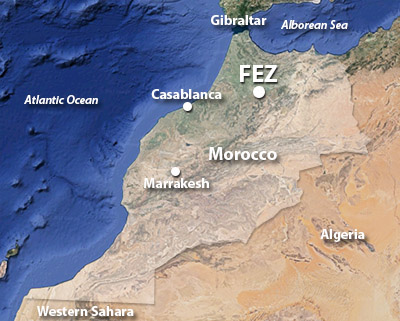 |
|
Sultan Ahmed spent his youth in Istanbul, capital city of the Ottoman Empire, and was impressed with the technological military advances of European nations like Portugal and Spain (starforts!). He and most of his sultanate's government was set up at Fez for some time, but he preferred the city of Marrakesh, some 300 miles to Fez' southwest, and made plans to uproot and move his center of power there. "But what will happen to us," wailed the populace of Fez, "without your regal presence and protection? Will we be left to the wicked wiles of the warthoggy Ottomans?!?" And thus were born Fez' borjies (not sure what the plural of borj would be, so we're going with borjies).
Sultan Ahmed ordered the construction of ten (or maybe eleven) lil' forts (borj is the Arabic word for small fort) in and around Fez, adding to the city's medieval walls. These forts were to utilize the latest advancements in fortification technology, which as we all know means starforts.
Which certainly seems like a loving and protective endeavor on the Sultan's part...except Borj Nord and Borj Sud are the only remaining examples of whatever number of small forts were eventually built during this period, and they're clearly sited to watch over the interior of the city itself, not to defend against an attack from without. There's higher ground not far from both of these forts, upon which any attacker with a modicum of sense would drag artillery, and thus checkmate the merry little borjies.
|
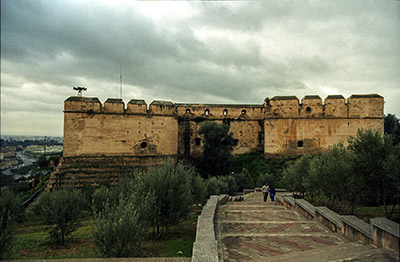
Le Borj in 2011, prior to receiving its most recent "rehabilitation." |
 |
That Borjies Nord and Sud were so sited seems to indicate that Sultan Ahmed was more concerned with the loyalty of Fez' inhabitants than the prospect of defending the city from the Ottomans.
Whatever their true purpose, the borjies were constructed with the "help" of Portuguese "prisoners of war." These POW's were unlikely to have had much say in the matter, and were used as slave labor. But what construction project could be closer to the heart of any Portuguese than a starfort!? Okay, guy who writes Starforts.com writeups, we get it: You like starforts. |
|
|
The Borj of Our Current Interest™ was built primarily of brick, stone and pisé (which sounds suspiciously like adobe). A little fort, its opposite curtain walls are only about 90 feet from one another, and it has an interesting arrangement of spurs at the leading edge of each bastion: Not unusual in the latest starforts of the age, but in Morocco?! Whomever was in charge of designing Borj Nord was clearly on top of the latest fortification trends!
|
And that seems to be the mystery: Who designed Fez' borjies? The 1580's were relatively early years of the starfort phenomenon (the first examples appeared in northern Italy at the very end of the previous century), and there were unlikely to have been any Moroccan engineers with enough knowledge this new technology to create such a perfect example as Borj Nord. Portuguese prisoners "assisted" in the construction of these forts, but would they have been permitted to design them? This is my doubtful face.
Added to this mystery is the radical difference in design betwixt Borjies Nord and Sud.
|
 |
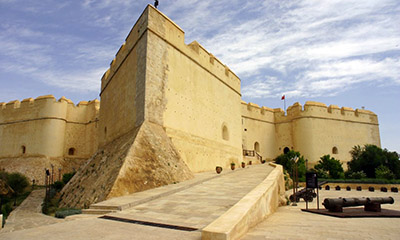 Borj Nord's southern bastion, after the fort's most recent facelift. Note the majestic spur at the bottom of the leading bastion! Borj Nord's southern bastion, after the fort's most recent facelift. Note the majestic spur at the bottom of the leading bastion! |
|
Borj Nord and Borj Sud are relatively close to one another, built on either side of the Fez that existed in the 16th century (the city has now expanded vastly to the original location's southwest) and notionally at about the same time, but their designs couldn't be more different. While Nord is a beautiful, sleek classic starfort design, Sud is some kind of a shardfort. While it certainly exhibits some starfort (or more polygonal fort, actually) aspects and looks as though it could manage itself quite well in a fight, there seems to be no way it could have been designed by the same dude who dreamed up Borj Nord. Additionally, there were no other starforts built in this style elsewhere in Morocco ( Fort al-Kabibat in Larache is a lovely starfort, but it's not this lovely!). Were the remaining 8 or 9 fortlets built around Fez of this style? Nobody seems to remember, probably because all of the people involved have been dead for hundreds of years. Sadly, we will likely never know the answer to these mysteries. Under Berber rule, Fez had issues with plague, poverty, famine and civil war in the first half of the 17th century. Sultan Al-Rashid (1631-1672) recaptured Fez and whipped things back into shape in 1666, reinstating the city as Morocco's capital. For some period, Borj Nord may have served as a cannon factory.
|
|
|
|
Germany said hey no problem, deploy all the troops you want, but we'll be needing some cool new African territory for ourselves as well. Berlin forced the issue, sending a gunboat to steam belligerently along the coast. These events were collectively known as the Agadir Crisis, which was resolved by the Treaty of Fez (signed March 30, 1912). France gave Germany some of the French Congo, in return for being permitted to take over Morocco as a protectorate.
|
Which did not necessarily fit in with the plans of most Fezicans (Fassians, actually, but who's counting?). A series of riots broke out in Fez shortly after the signing of the Treaty of Fez, during which a relatively small number of French troops holed up in Borj Nord.
While I would love to be writing a paragraph about how the dogged Frenchmen in their intriguing headgear manned the walls of the Borj of our current interest with their Lebel Model 1886 rifles, heroically fighting off hordes of frothing, semi-conical-hat-wearing locals until a French relief column arrived in the nick of time, I can't, because it doesn't appear as though anything even remotely like that actually happened.
|
 |
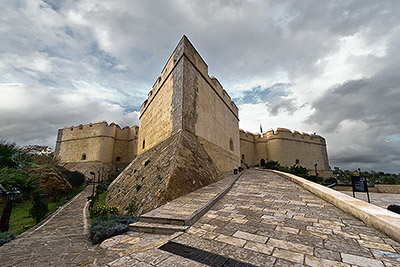 Borj Nord is one good-lookin', pointy starfort. Swiped from Fescity.com. |
|
French troops did use Borj Nord as a base of operations in Fez, but there are no stories of the fort's being utilized in a defensive nature during this fracas. The French ultimately cowed (killed most of) the rioting Fassians with the profligate use of artillery, and though much of the city was severely damaged by this, Fez was made the capital of the French Protectorate of Morocco. It remained thus until 1925, when the capital was moved to Rabat, which remains Morocco's capital city today.
|
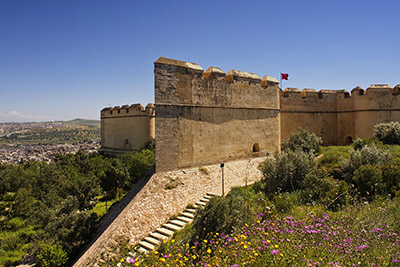
It's so little, but it's so jutty and heroic! Why couldn't Morocco be filled with such heroic little borjies? |
 |
The French Protectorate of Morocco ended in 1956. Spain, which held much of northern Morocco, shortly gave up their imperial claims as well (with the notable exception of Ceuta, home of the relatively starfortish Fortaleza de Hacho). The Kingdom of Morocco was declared as an independent state. Borj Nord was restored, and opened as the Musée des Armes, or Arms Museum, in 1963. This museum boasts 1,089 pieces exhibited in 15 halls, ranging from "prepared pebbles" and "penduncles" to "French machine guns" used in the First World War. Admission is 15dhs, about $1.55 US. |
|
|
Many thanks to Peter Presford, creator of Postern magazine, for alerting us to Borj Nord! Peter is more a castles guy than a starforts guy, but we love him anyway.
|
|
|
|
|
|
 |




